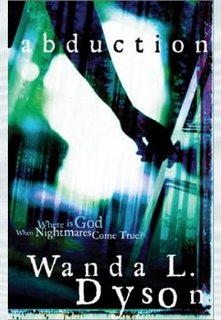Top Five Reasons One Particular Editor Rejects a Proposal
****
Ah, what mysteries abound in a writer’s world. Is it who or whom?. . .Single- or double-spaced? . . . And what sadistic editor expects me to spell a word like onomatopoeia, much less know what it means? . . .
But there’s really not much mystery involved as to why I might reject a cozy proposal. In fact, I could summarize my response in one word: Ho-hum. (Or is that two words? . . .And yet another mystery!)
For those of you potential Barbour authors who have an interest, perhaps I’d better expound on what I mean by Ho-hum.
I’m really not in the market to contract with an author who offers:
Ho-hum Genre/Guidelines Research.
Probably the number one reason I reject a proposal stems from the fact that the project being proposed is NOT a cozy mystery. It may be a mystery proposal. It may even be a good mystery proposal. Or romantic suspense. Or police procedural. But it’s not a COZY mystery, and my boss is paying me to buy only COZY mysteries. If you haven’t studied the sub-genres under the Mystery umbrella thoroughly enough to distinguish the differences, then the chance that I’ll acquire your proposal for publication is about as likely as hitting a bull’s eye blindfolded. Almost every cozy mystery I acquire will meet certain criteria. (I reserve the right to overlook one of two shortcomings in this area if the proposal shines in other areas, but if I were you, I don’t think I’d risk it.) These required elements are spelled out in our writers’ guidelines, which are available on our Web site or upon the author’s request via E-mail. I’m not gung-ho about throwing money at an author who isn’t gung-ho about researching just what it is I’m wanting to publish. You’ve heard it before. . .I’ll say it again. . .KNOW YOUR INTENDED MARKET.
Ho-hum Characters.
Probably the most notable trait of a cozy mystery is the Quirk factor of its characters. There needs to be something eccentric or out-of-the-norm about your main character and/or main supporting character(s). This can be achieved any number of ways¾by personality trait, physical characteristic, hobby or occupation. Among the proposals I’ve contracted to date, the cast of characters include a worm farmer, an overweight African American granny with painful bunions, a bachelor professor from India, a specialty soap maker, and a failure-of-an-Olympic-swimmer-turned-advice-columnist, to name just a few. Then there’s the housewife and mother of four who, on the surface, seems quite ordinary¾an average ol’ Jane. But, as we delve deeper into the story and she stumbles across the body of a certain grocery store employee/black-mailer in the milk case, we uncover a few idiosyncrasies about our heroine that set her apart and make her a valid suspect in the mystery. (You’ll simply have to join the book club to learn the rest of the story!) The point is, even the character that appears vanilla on surface level must have something that distinguishes her as someone about whom the reader wants to learn more.
Ho-hum Plot Development.
This takes me back again to my advice to study the cozy mystery genre in depth before you write your own. There are plot devices that are germane to all cozy mysteries. For example, the inciting crime in a cozy mystery should occur within the first chapter or two of the story. While the crime of choice in most cozy mysteries is a murder, it should not be portrayed as graphic or gory. Oftentimes the crime occurs “offstage” and is stumbled upon by the amateur sleuth.
One note of advice¾even though Barbour is in the market for romantic cozy mysteries, romance should not overpower the mystery. While we require that at least 20% of the plot focus on a romance thread in our cozy mysteries, I’ve rejected proposals from several published Heartsong romance authors. They can’t seem to shake the romance formula and tone in their cozies. We are not in the market for a romance with a mystery thread. We need strong mysteries with a liberal sprinkling of romance thrown in.
Ho-hum Writing.
On occasion I come across a proposal that describes an interesting plot in the chapter-by-chapter summary, and I’m licking my chops to get into a great read as I turn my attentions to the sample chapters. By the third paragraph, however, my eyes have glazed and I’m longing for a pillow.
Either by creating curiosity, stirring emotion, or intense action, give me sufficient reason to keep reading. Don’t bore me with inconsequential description or plodding narrative. I know, I know, it’s easy to say and not so easy to do. I don’t know that I could even pinpoint what constitutes great writing from mundane. I just know I knows it when I sees it!
Ho-hum (or Worse) Author Reputation.
Are you the kind of author editors love to work with? Or do you e-mail her every other day, requesting an update on your proposal’s status? Be afraid. Be very afraid. Editors talk. Particularly editors who work in the same publishing house. ‘Nuf said.


